Bandung was a welcome change from the heat of the Klang Valley. Its elevation meant lower temperatures, and relatively frequent rain also helped to keep things cool. The variety of clothing retail options also certainly help make Bandung one of the more popular tourist destination in the region.
Note: From October 2023 onwards, all commercial jet flights to Bandung have been relocated to the brand new Kertajati International Airport (KJT). AirAsia no longer serves Bandung Husein Sastranegara Airport.
First published 1 April 2020. Updated 19 February 2023.
Departure experience at Bandung Husein Sastranegara
Bandung Husein Sastranegara International Airport is surrounded by the city, making access highly convenient. From street level the only indication that one was approaching the airport terminal were the road signs and the air force checkpoint. This is because the airport is shared with an Indonesian Air Force airbase.
The airport is extremely small, with major expansion rendered difficult by its built up surroundings. Despite this, the terminal underwent a massive redevelopment and expansion between 2015 and 2017. This gave the interior a modern look and a more modern facade for the exterior.
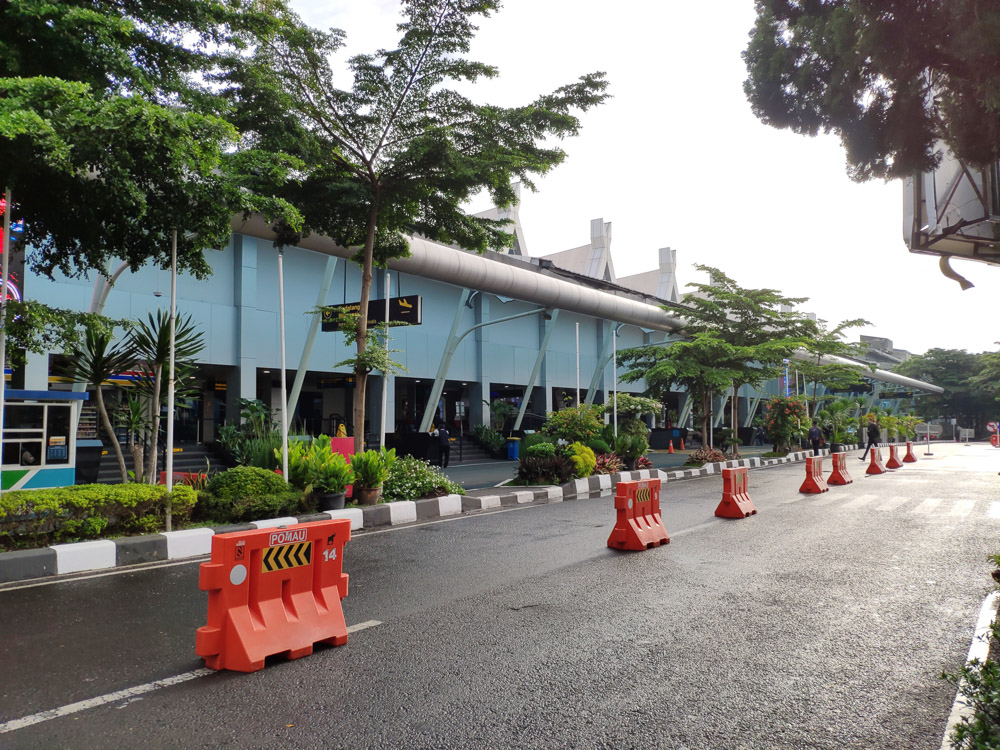
The passenger departure flow starts in the older portion of the terminal where the check-in counters are located. A check of travel documents are conducted at the terminal entry point before passengers are allowed to enter the terminal. This is to ensure only actual passengers enter the terminal.
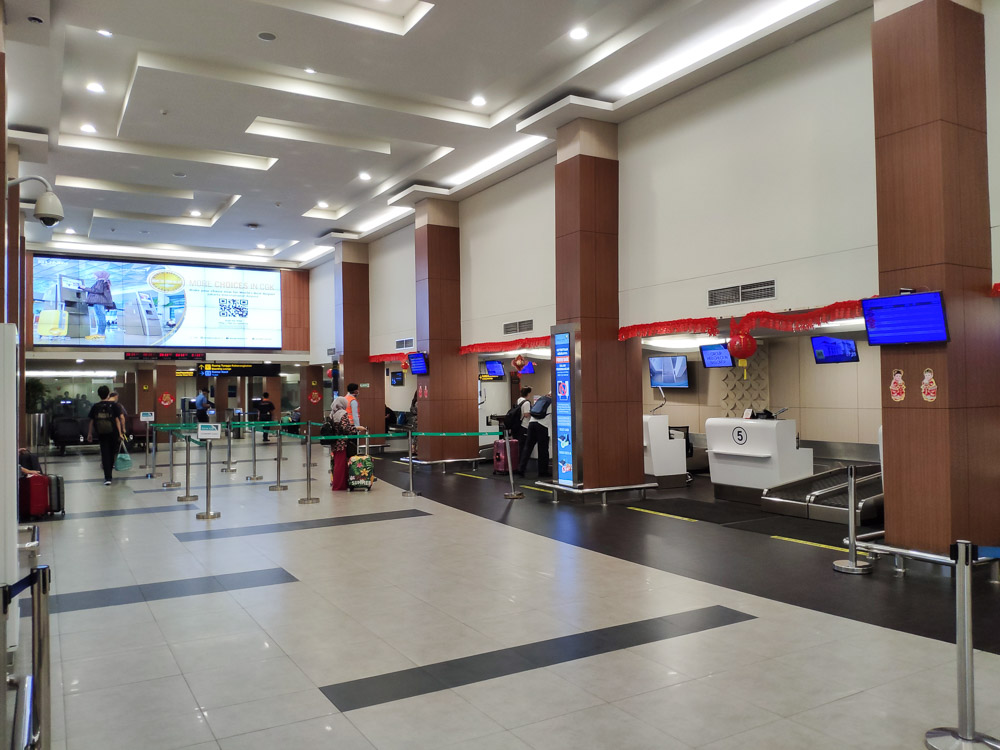
As we still had some time to kill after check-in for our 08:30 am departure, we headed outside for morning drinks at the nearby warungs. It certainly beats paying for Starbucks and other overpriced drinks at other city airports around the world!
The gate area stretches from the older terminal building to the new extension, with the former being narrow and crowded and the latter being quite nicely sized. You get a nice view of the tarmac from the glass windows, and it was quite reminiscent of Belfast City Airport.
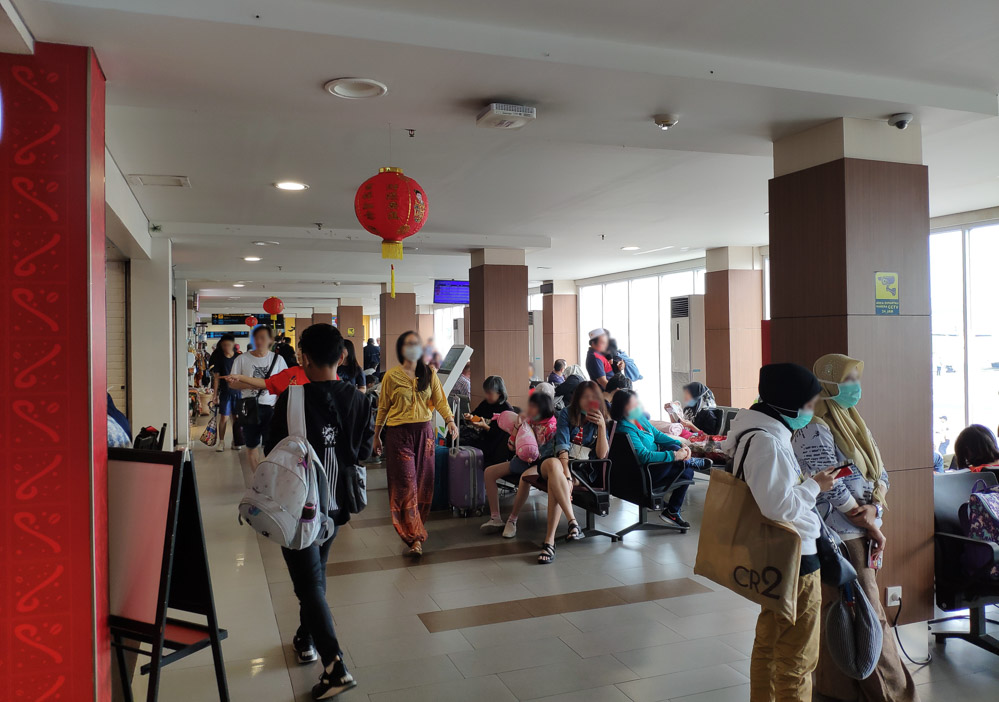
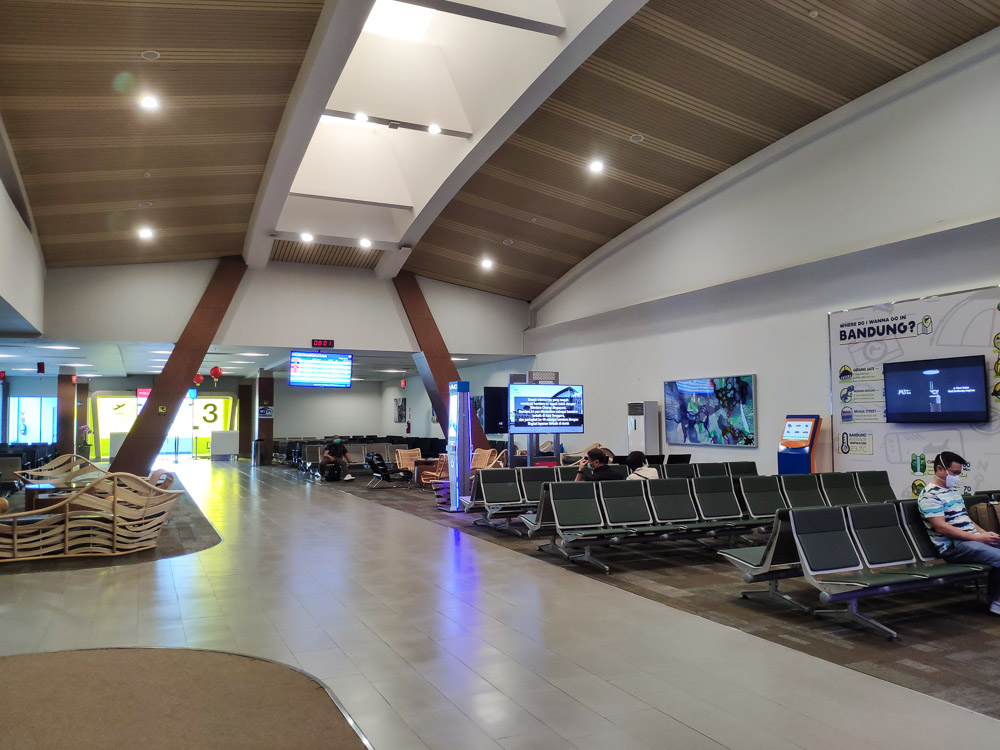
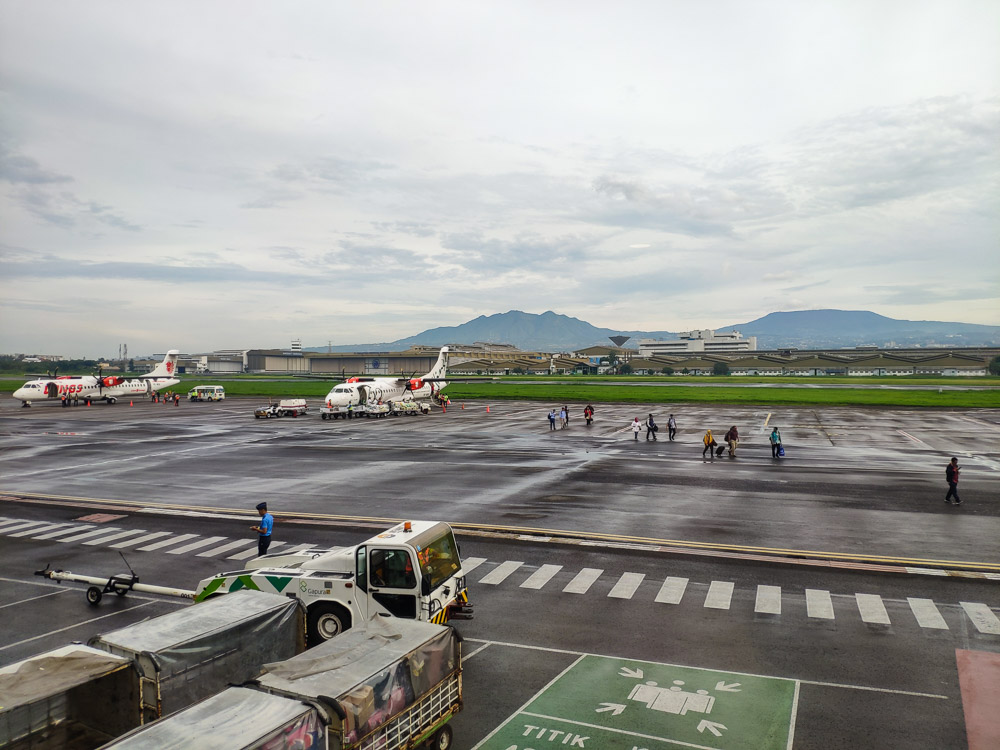
It wasn’t long until our aircraft landed and unloaded its passengers. Given Air Asia’s LCC operations model, it wasn’t long until boarding was called either. Talk about tight turnarounds.
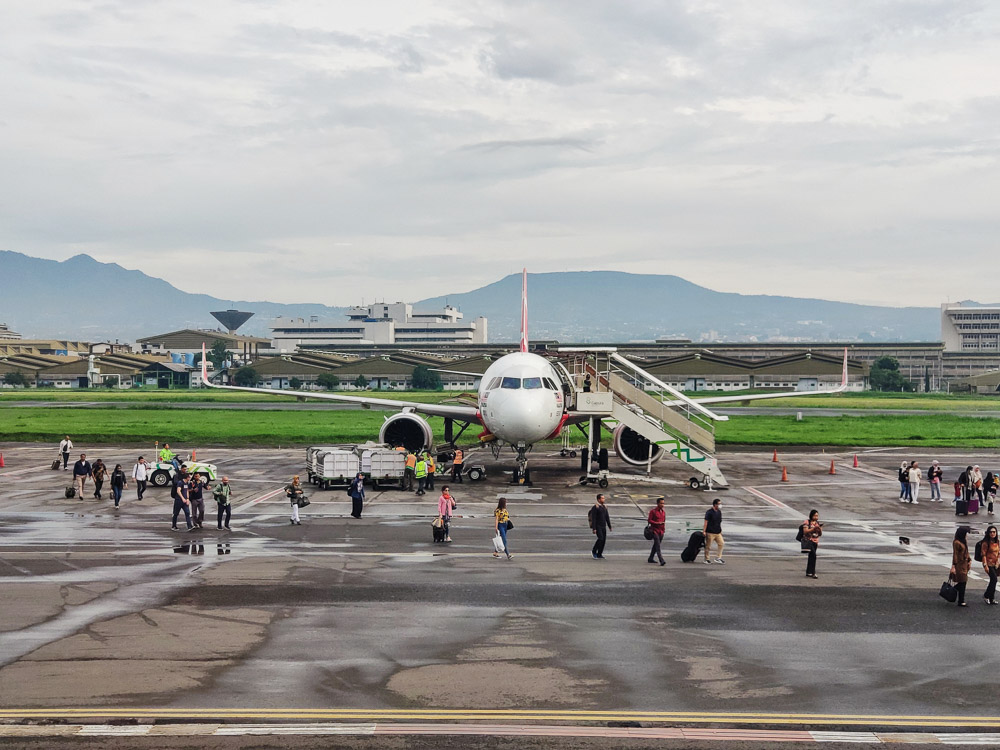
Operating flight 417 was 3 year old 9M-AGE, the 6th A320neo in Air Asia’s fleet. I was sat in a middle seat this time but with some access to the window with the permission of my seatmate.
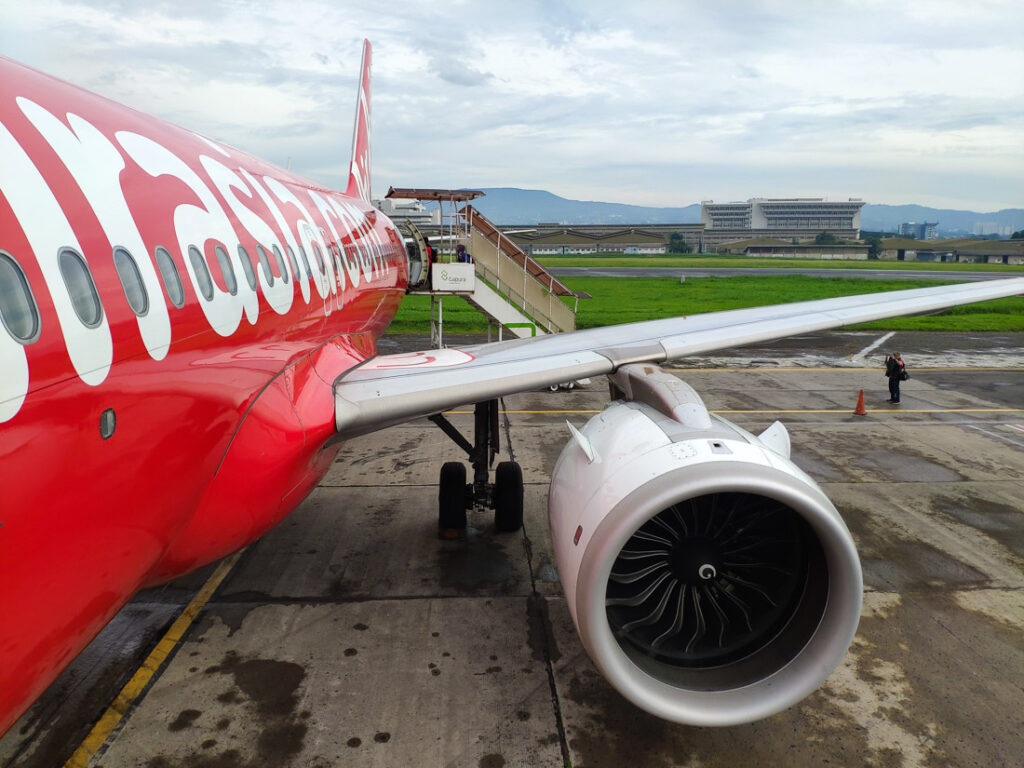
It was a clear day over Java, and as our flight path took us right over central Jakarta after takeoff from Bandung, I had great views of the megacity from the window. The new Jakarta MRT was also visible from the air, with its big station structures standing out against the densely built up area.
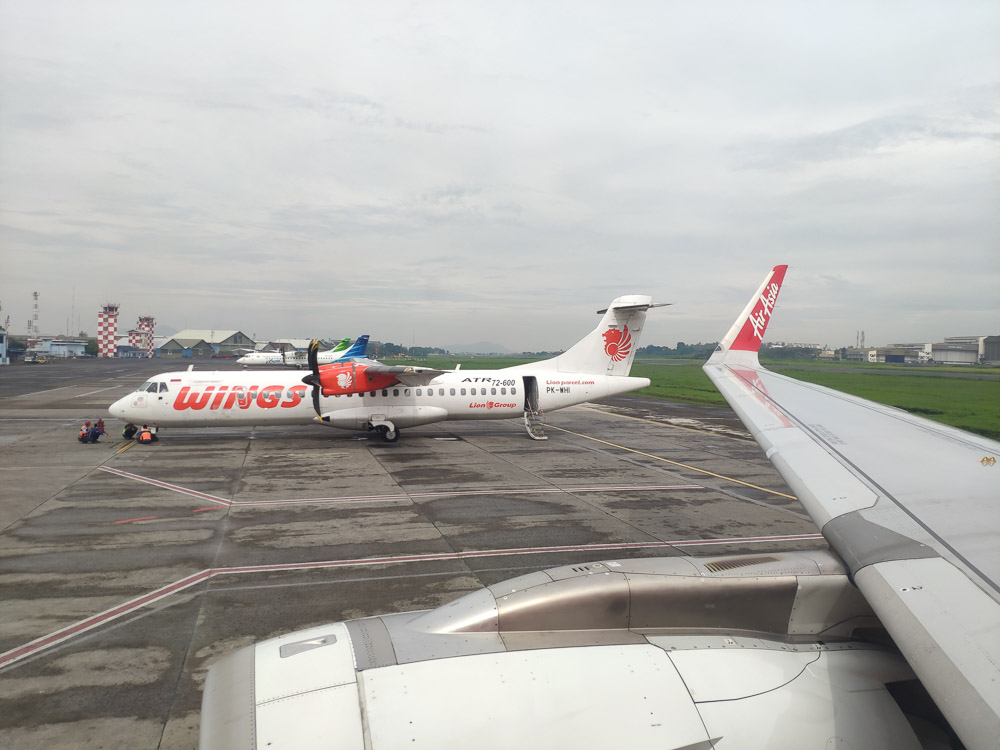
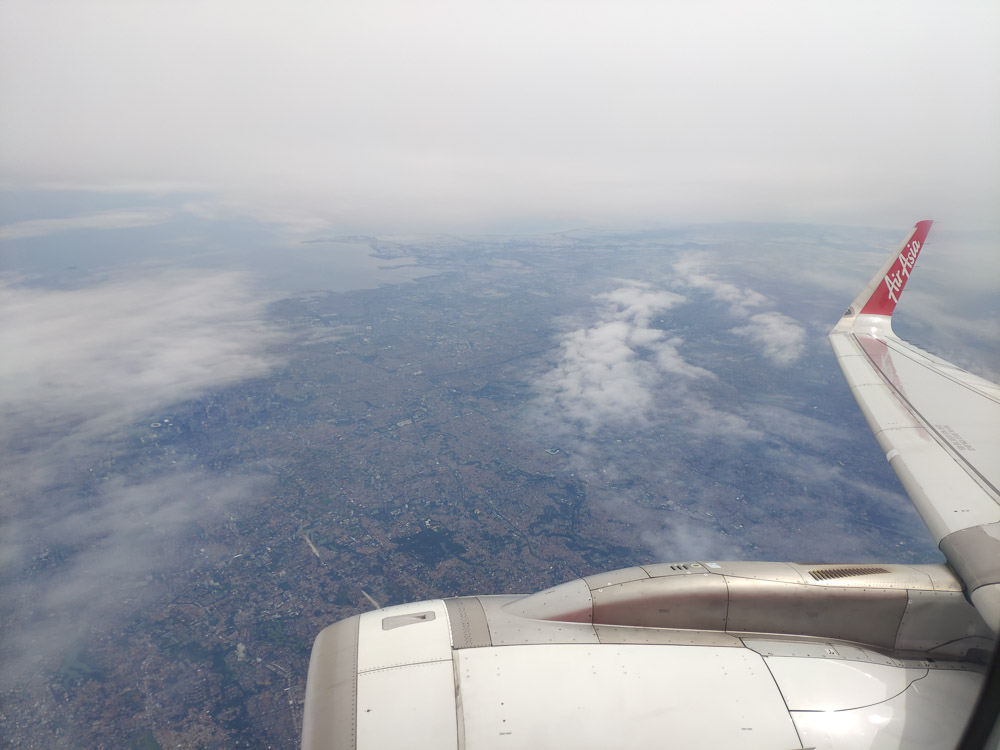
Cabin & Onboard Amenities
Air Asia has a standard cabin offering across its fleet, with the only difference being the seat models (the A321 gets the new slimline seats).
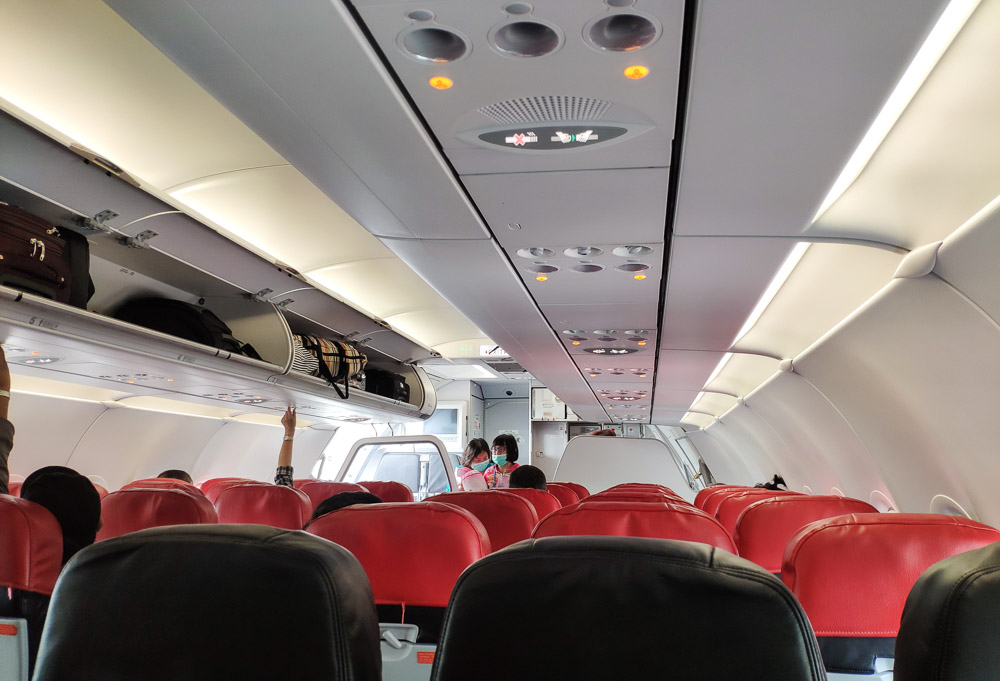
This aircraft, being a 2017-delivered aircraft, still carried the older padded seats. The seats are actually quite comfortable for short hops around the region with an acceptable legroom.
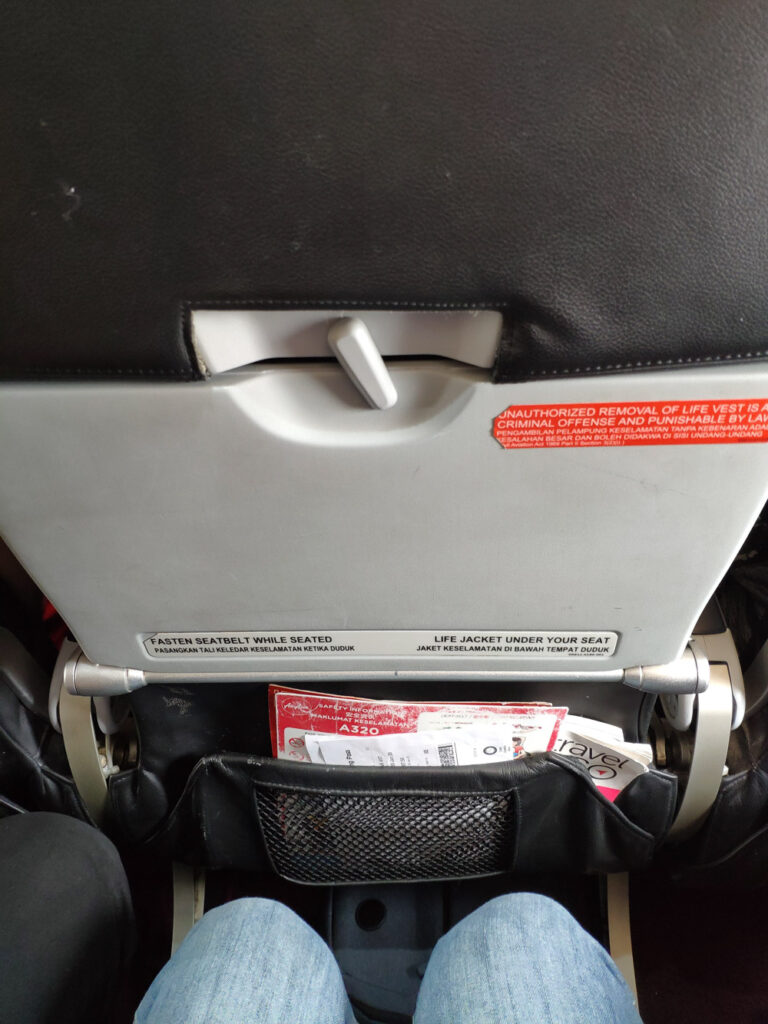
They also recline, which makes them better than Ryanair’s seats. Anything more than 3 hours, though, and I’ll be wishing for more legroom and recline.
Onboard Catering
For this return leg to KUL, I opted to prebook Uncle Chin’s Chicken Rice. While it’s not on the same level as the chicken rice you can get at Chinese hawker stalls on the ground, these are still very tasty and make a great inflight meal. The chili and gravy is more or less authentic and are given in separate packets. Like all prebooked meals, a small bottle of water is also included with the meal.
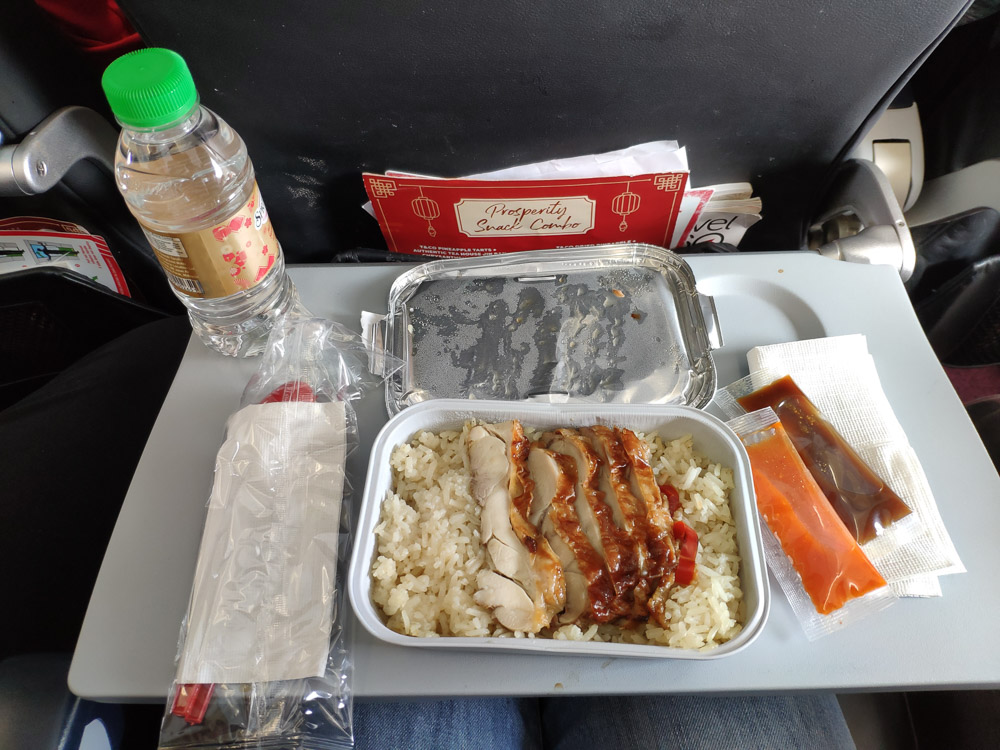
I’ve also tried the chicken rice served at Air Asia’s new Santan restaurant in Mid Valley. I must say that its quite a different chicken rice than the one served onboard, as the onboard variant is closer to the Hainanese Chicken Rice sold by Chinese hawker stalls, while the restaurant variant is more akin to the variant sold at Malay restaurants.
Arrival at Kuala Lumpur (KLIA2)
Descent and landing at KUL was straightforward, and we were soon making our way past the body temperature scanners located at the arrival corridors to catch arriving passengers with feverish temperatures. This was part of the early effort to mitigate the spread of Covid-19 in Malaysia.
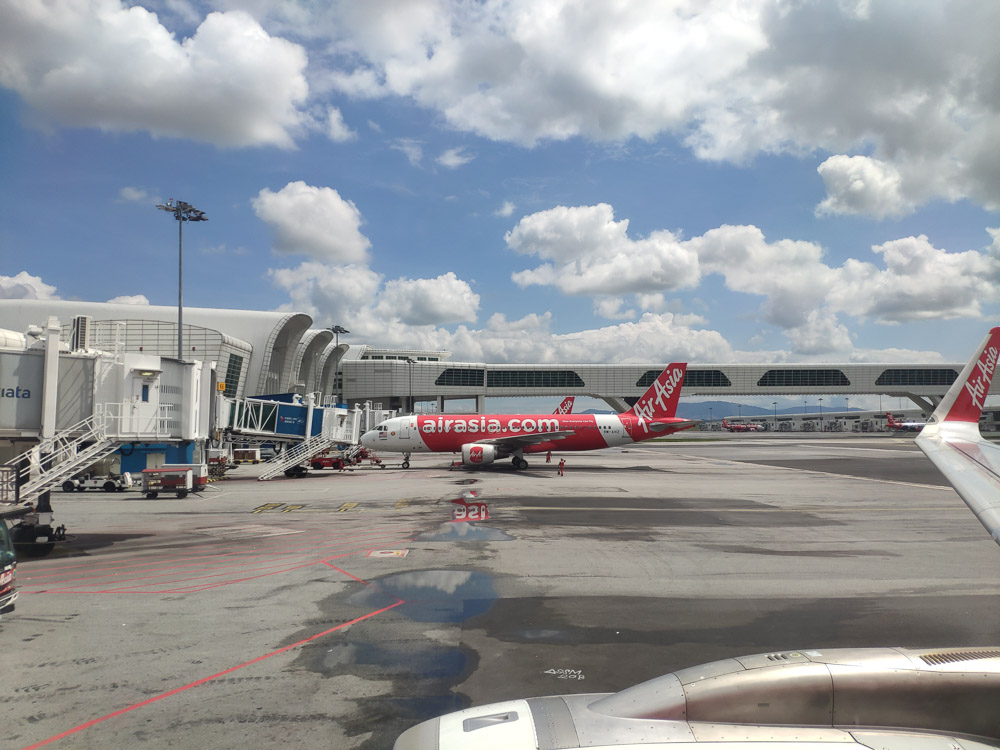
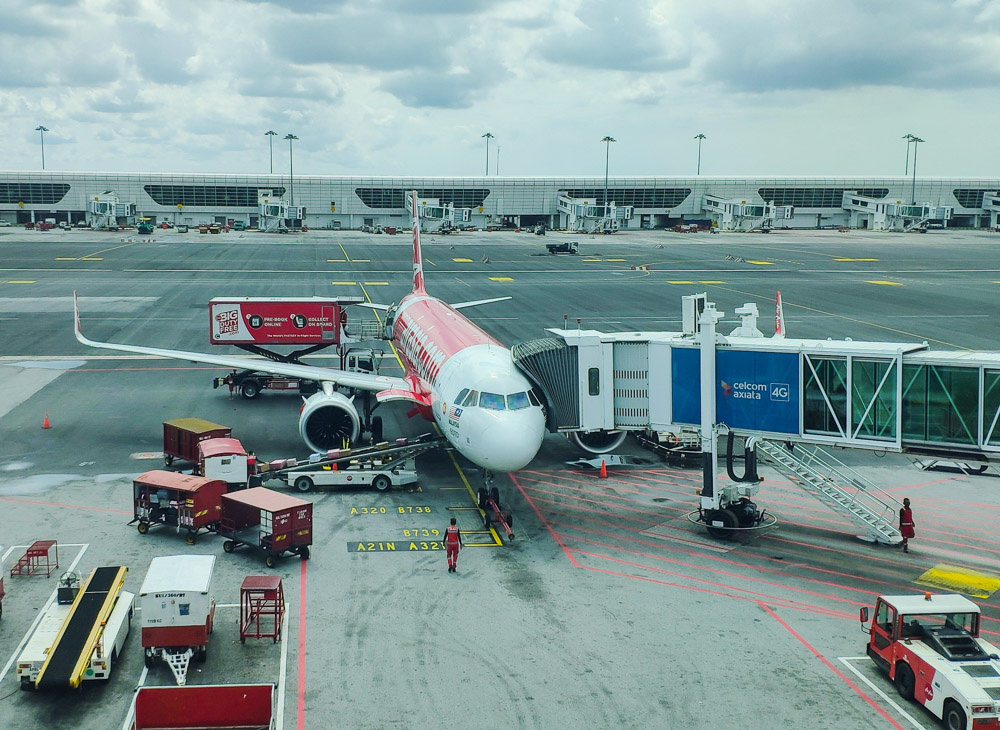
MAHB had also reorganised KLIA2’s arrival border control area to better accommodate a bigger queuing space. The previous layout saw 2 parallel rows of immigration counters with 2 separate sets of queueing space squeezed into a small area. Unsurprisingly it proved to be a major bottleneck and queuing for border control in a cramped area is an uncomfortable terrible first impression for visitors too.
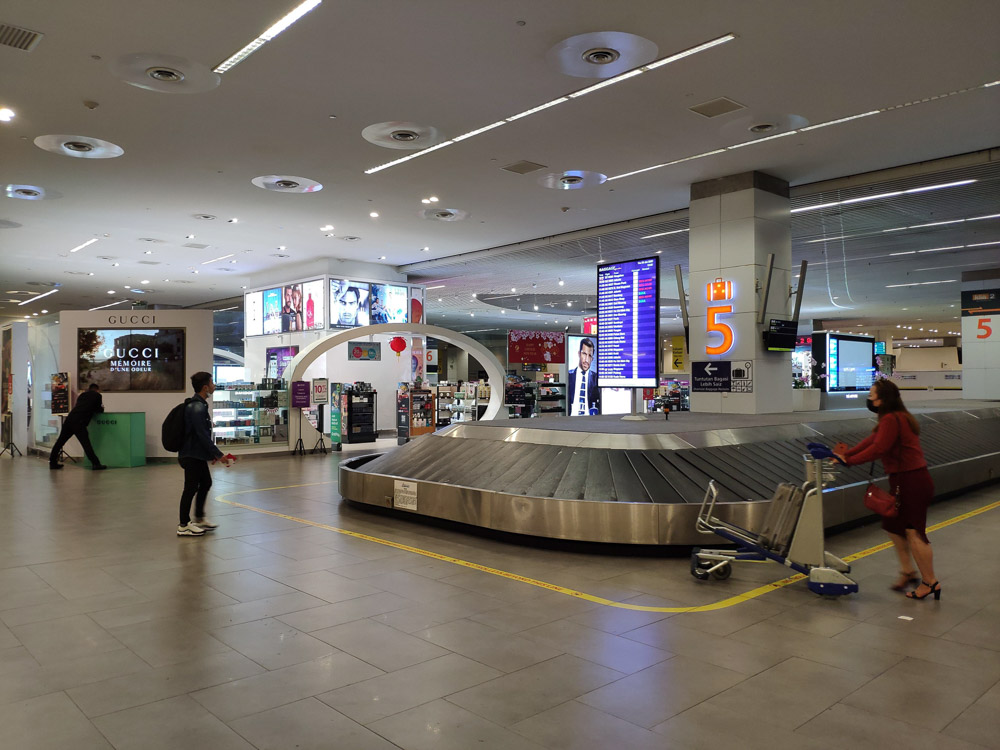
The most prominent casualty of the reorganised border control area was the previously prominent Eraman duty free stall that occupied loads of space right after the counters. It has since been banished to its own corner next to the baggage carousels.
Final Thoughts
Again, Air Asia proves itself to be consistent and convenient. Coupled with the affordable fares, its no surprise that they’ve grown to be the largest low cost carrier in the region.
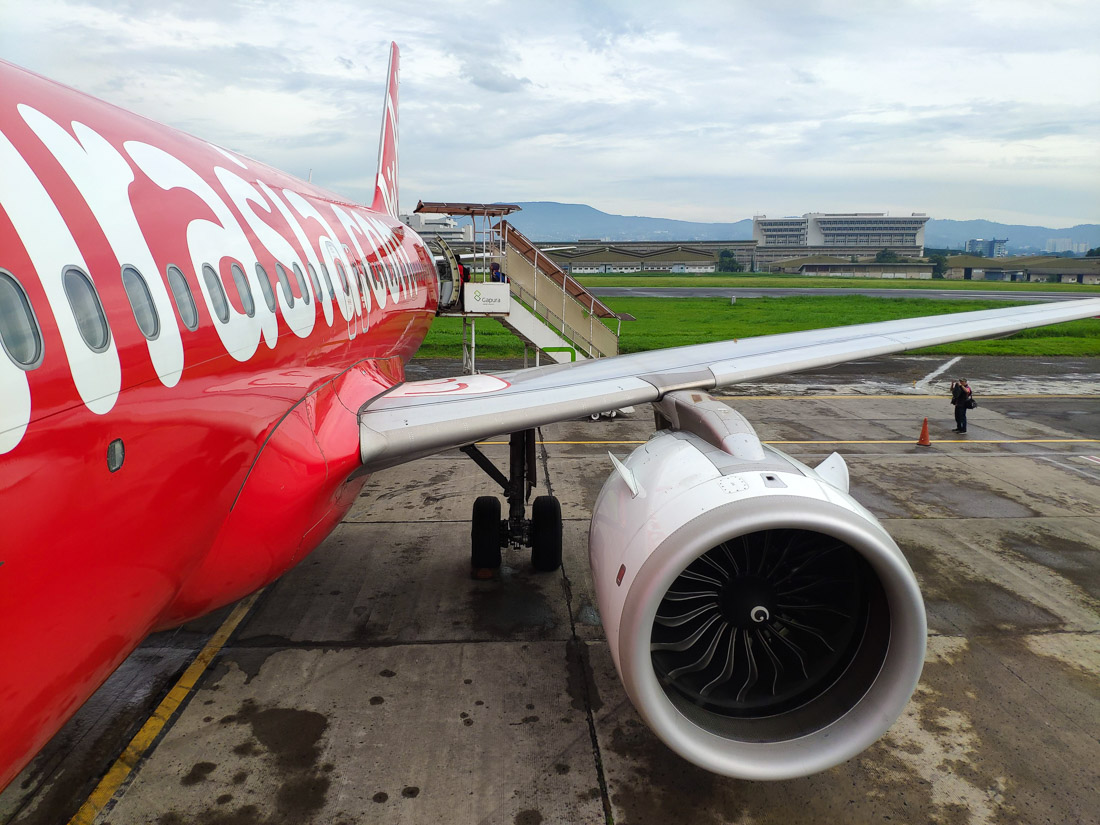
Comments
One response to “REVIEW | AirAsia AK417 from Bandung to Kuala Lumpur”
[…] arrivals immigration was fixed in early 2020, shortly before Covid-19 turned the world upside down. I had the opportunity of using the rearranged layout, and I have to say that it was actually pretty decent. Nevertheless, the rest of the terminal still […]